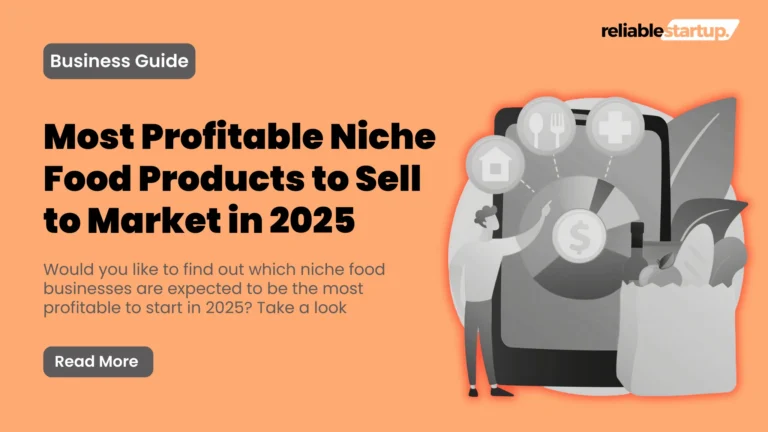Easy Guide for Starting a Pet Food Business from Home

If you are starting a pet food business from home, then you must follow FDA and state regulations. Along with this, you should develop a safe recipe, register your business, and obtain necessary licences with proper labelling as well.
But how can you do all this? This blog post is here to answer this question.
You will learn how to start a pet food business as well as the requirements it has.
So without wasting your time, let’s read.
Is the Pet Food Business Profitable?

Yes, the pet food business is profitable, but you don’t believe it. As you think about whether starting a pet food business from your home will give me profits or not. This has created some confusion regarding your dream of having your pet food business.
But you should look at the following stats, and you will get your answer:
- As research shows, the pet food market will touch $193.65 billion by 2032. Its current market value is $132.92 billion in 2025 and is growing every day.
- The profit margins in pet food, which are from 10% to 20%, are a pretty decent amount to get started with.
So, if you are still thinking that a pet food business is not profitable,. Then your mind is not ready to start a business. Although every business faces challenges in the beginning, you have to be resilient and consistent.
Starting A Pet Food Business from Home—Step-by-Step

Starting a business is not an easy task. You need certain steps to take to start and grow your food business.
However, after thorough research and investigation, we have compiled the following steps that you should take while starting a pet food business from home:
1. Research the Pet Food Market and Trends
Before starting any business, you must know the market and the prevailing trends. For example, you should know what pet food is trending, which recipes are in demand, and which pet food products people prefer the most.
In addition, you should also know your target audience and their needs. For this you can use many research tools like Ahrefs, AnswerThePublic, and even Google.
2. Develop Unique and Nutritious Recipes
Your recipe is your secret weapon in any food business. And you have to put most of your energy here.
However, in the pet food industry, you should target specific pet needs or dietary requirements in your recipe. If you don’t know these requirements, you should consult a veterinary nutritionist.
3. Source High-Quality Ingredients
Establish relationships with reliable suppliers, such as local farms or organic producers, to ensure product quality and transparency.
4. Understand and Meet Regulatory Requirements
Research and obtain necessary permits and licences, including business licences, food manufacturing permits, and health department approvals. Regulatory compliance is crucial to avoid fines or business closure.
Also follow FDA guidelines for labeling and safety.
5. Create a Strong Brand and Attractive Packaging
Packaging plays an important role in your branding and customer satisfaction. It must meet standard food safety guidelines as well as be attractive and safe.
6. Set Up Efficient Production and Quality Control
In the food industry, you must ensure quality in your product. For this you need to design a safe, clean workspace at home for production.
Also, if you can afford it, implement a quality control system to ensure safety in every package.
7. Build an Online Presence and Marketing Strategy
According to 2.77 billion people (33% of the global population), shop online. This shows you must use social media and other digital platforms to promote your brand.
But select the social media handle where your target audience spends most of their time.
8. Test Products with a Pilot Program
Start small by selling at local markets or online. Gather customer feedback to refine your recipes and branding before scaling up.
9. Establish Distribution Channels
Don’t just limit your food business to online. Explore other selling sources like local pet stores to maximize reach.
10. Monitor Profitability and Scale
Keep track of your sales, expenses, taxes, and profits. By doing so, you will know where your business is headed.
These are the basic and fundamental steps for starting a pet food business from home. If you follow them with belief in yourself. One day you will scale it.
Also read: How to Start a Restaurant at Home?
Legal Requirements of a Pet Food Business from Home

Every business has to be legalized, and if not, then it faces problems in the future.
However, to safeguard your business from potential legal actions, you must follow the following instructions to start a successful and risk-free pet food business:
1. FDA & Federal Guidelines
First, you must use those ingredients in your food products which FDA has approved or AAFCO-defined ingredients.
Secondly, your label or packaging must include the product name, net weight, ingredients, manufacturer, and nutritional adequacy statement.
2. State Registration & Licensing
For any food business, you should get the following registrations and licences:
- Product registration: Most states require registration for each product (e.g., $20–$500 per product annually).
- Business licence: Obtain a state licence (e.g., Illinois charges $30/year).
- Label approval: Submit labels for review to ensure compliance with AAFCO standards.
3. Home-Based Exemptions
The best part is that you don’t need FDA facility registration if you are operating your business from home. However, you will still follow adulteration rules and state labelling laws.
Also read: How to Start a Small Food Business from Home?
What Kind of Pet Food Must You Sell?

Now you have got the idea of starting a pet food business from home. But you are still confused about what type of pet food you should sell. But we have the solution for this problem as well.
is the list of all those pet foods that are trending, and if you start selling them, you can make a decent amount of money:
1. Premium Freeze-Dried & Raw Food
According to the research, freeze-dried dog food searches grew 79% in 5 years; 66% of dog owners feed raw food.
This shows it is in demand, and you scale your pet food in it.
2. Functional Supplements & Probiotics
In the last 5 years, searches for “dog probiotics” increased by 91%. This shows a high demand and profit margin opportunities if you start selling this product.
3. Fresh & Home-Cooked Meal Kits
More and more pet owners are now preferring fresh pet food. As they improve digestion and metabolism of living beings
4. Alternative Protein Formulas
This is a part of the premiumisation trend for novelty in food. This trend demands new proteins like salmon, cod, and insect-based ingredients.
So starting with pet food will be a great idea.
5. Customized & Breed-Specific Diets
In 2025 most pet owners are willing to pay for personalised nutrition. So you can start this food type with subscription-based plans or DNA-based meal plans.
6. CBD-Infused Treats
The U.S. CBD pet market is going to reach $563M by 2025 (38.3% CAGR). This shows a high potential in this product as well.
Conclusion
Starting a pet food business from home is a great idea to make money. Although there are some challenges while starting it. But every success comes with hardships that you must face.
But before starting your pet food business, you must consider the prerequisites of this business. As this is something related to life, about which we must be very cautious.
However, if you need further assistance or help,. Check out our other business idea blogs to start your dream business.
FAQs
1. Do you need a licence to sell homemade pet food?
Yes, most states require licenses/registrations (e.g., Minnesota’s Cottage Food registration for treats or Commercial Feed License for meals). FDA compliance for labelling and ingredients is mandatory.
2. Can you sell homemade dog food from home?
Yes, but only non-perishable treats qualify under home exemptions (e.g., Minnesota’s Cottage Food rules). Meals require state licenses and commercial kitchen use in most cases.
3. How much money to start a dog food business?
For a home-based dog food business, you will need $500–$5k (licences, ingredients).
While for a commercial one, you will need $50k–$775k+ (facility, equipment).






